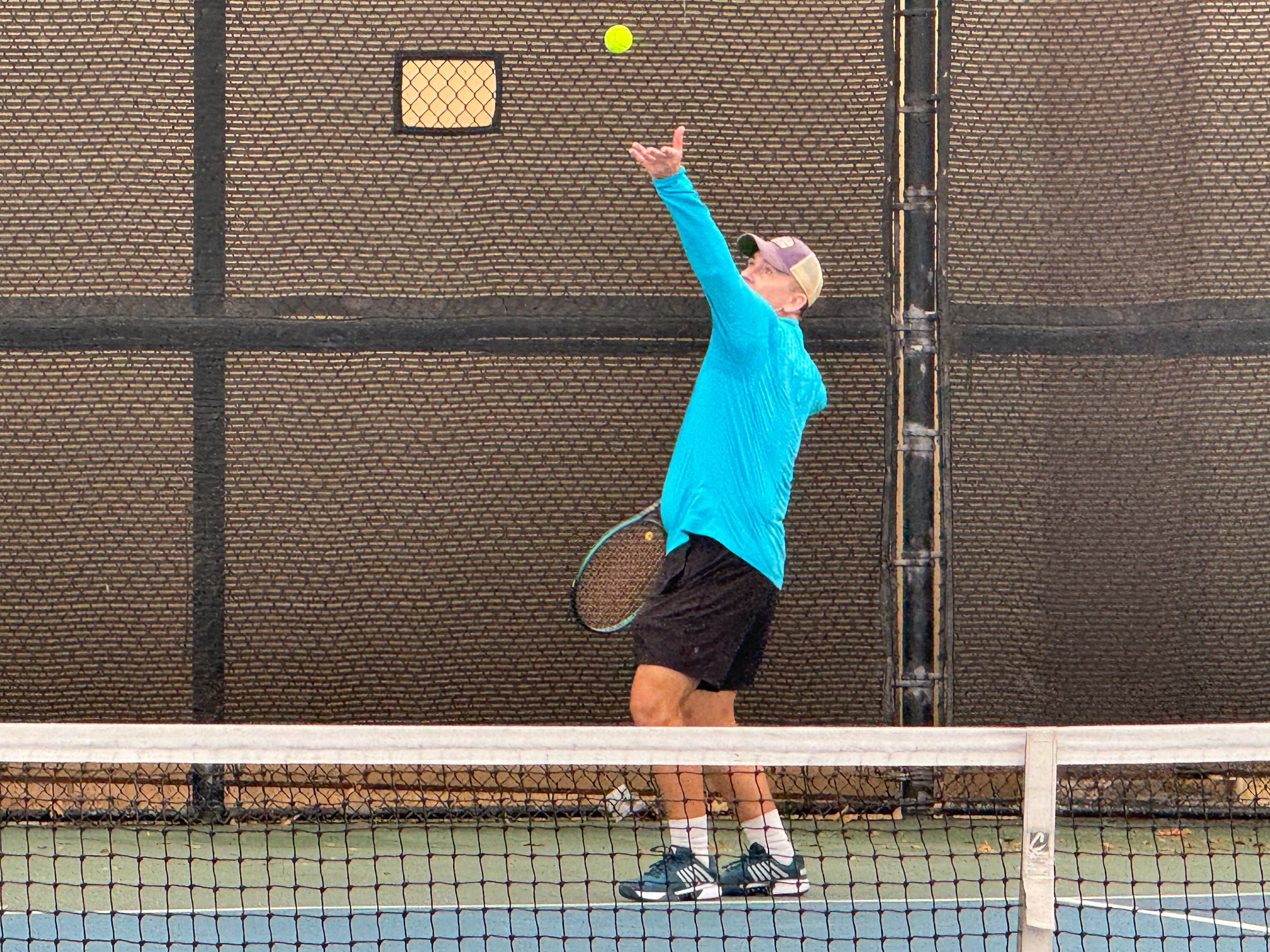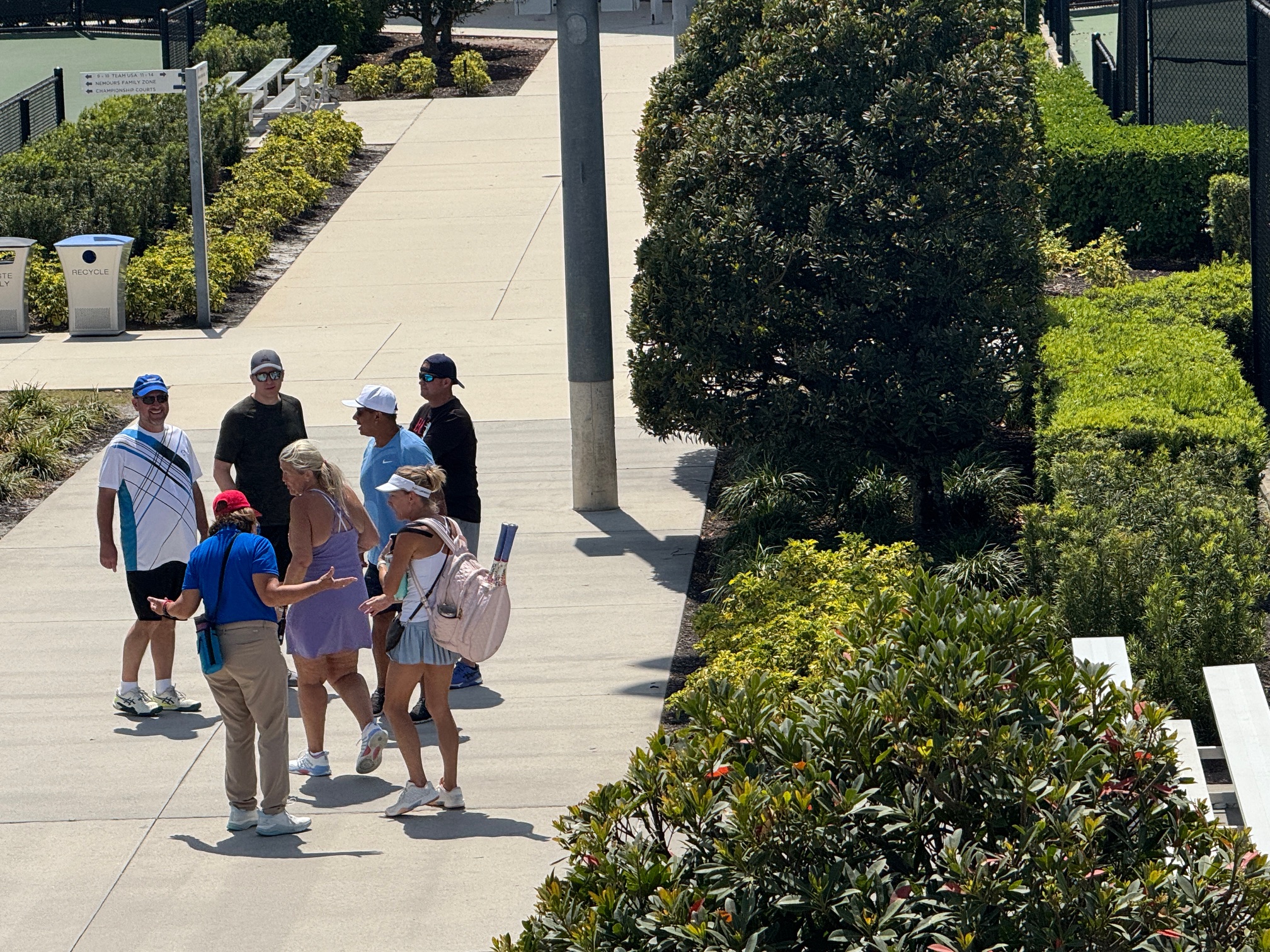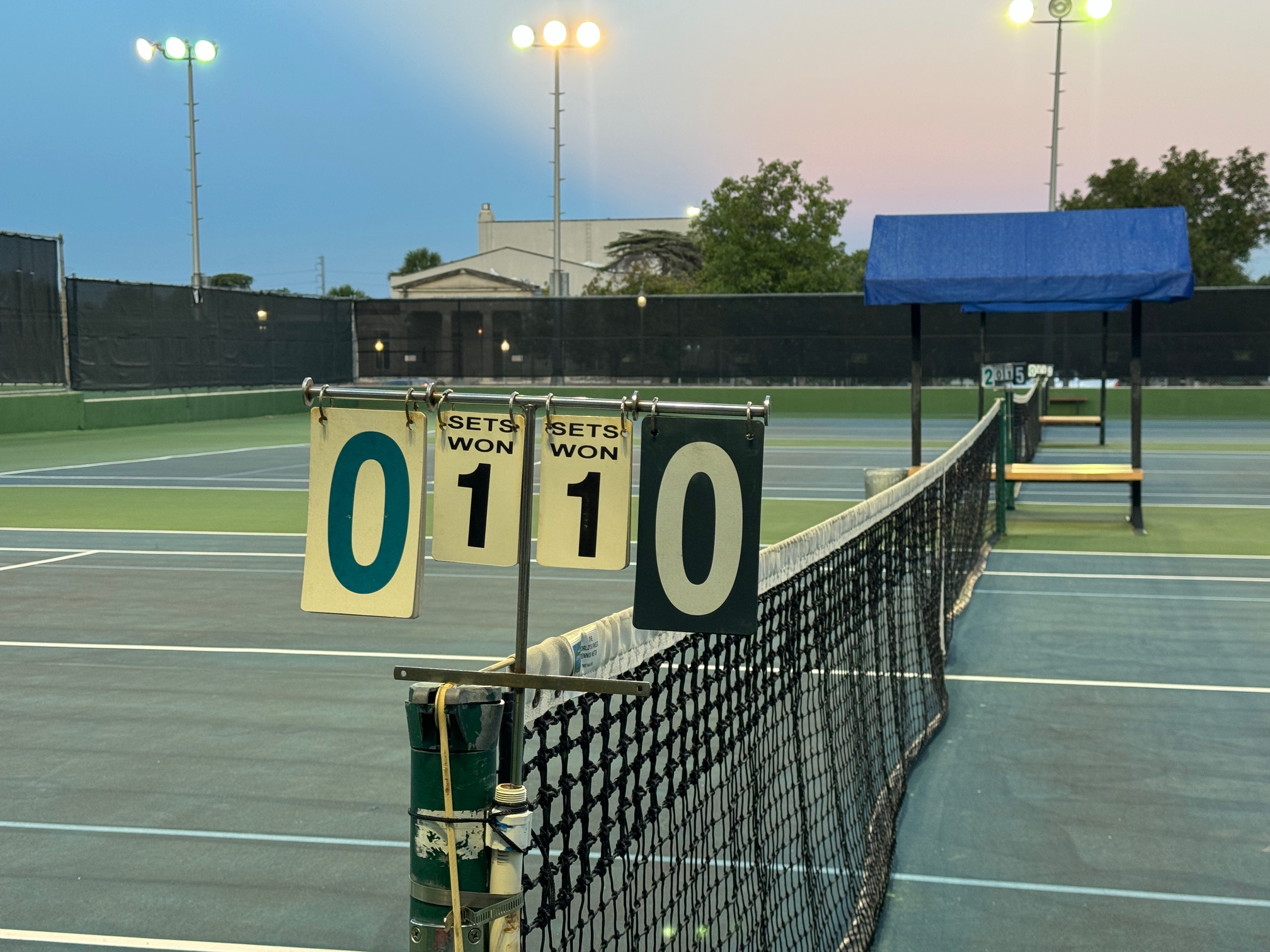Today ‘s rule is the final and most interesting one contained in “A Good Return.” It is also the part of this section that is the most eye-opening for me. As it turns out, I have a history of misunderstanding this rule.
It is a good return if:
f. The player hits the ball in play, which hits another ball lying in the correct court.
USTA Fiend at Court, ITF Rules of Tennis, Section 25
The importance of clearing loose ball off the court prior to playing a point is an imperative that was instilled into the very fiber of my being when I was a very young junior. At that time, my understanding was that if a ball hit a ball on my side of the court that I would lose the point. My initial read of 25(f) was through the lens of that experience.
Fast forward to when the umpire I gave birth to started her junior tennis career. That kid came pre-wired with a very casual attitude toward allowing balls to populate the surface of her side of the court. To compound matters, she didn’t start playing competitive tennis until adolescence had fully set in. In the eyes of an early teen, parents are pretty much the dumbest beings on earth.
My tennis parenting career had many episodes of watching point after point being played with loose balls on my daughter’s side of the net. On many occasions, our post match discussions involved me pointing out this rule in my dog-eared copy of “The Rules of Tennis” and telling her that she would lose the point if her opponent managed to hit the ball lying on her side of the court.
As it turns out, I was wrong. There is an ITF Case Decision directly associated with this rule that completely changes the meaning.
Case 2: A ball in play hits another ball which is lying in the correct court. What is the correct decision?
Decision: Play continues. However, if it is not clear that the actual ball in play has been returned, a let should be called.
USTA Fiend at Court, ITF Rules of Tennis, Section 25
The decision in this case is clear that if a player can return the correct ball then the point will continue. In a lack of synaptic consistency, I was already aware of this rule. It comes up a lot in adult tennis drills where the contents of an entire basket of balls winds up scattered about the court during the natural course of play.
I cannot explain my own inconsistency of understanding in this case. In my defense, since I am diligent about clearing balls from my side of the court, I have never had this situation arise in an actual match. I am not sure how my brain would have processed it.
So if a ball strikes another ball lying on your side of the court, shame on you for practicing poor ball hygiene. That being said, you should make an attempt to return one of the balls at all cost.
Given the let aspect in the Case Decision, if it cannot be ascertained which ball was returned, it is a let. In actuality, it will probably NEVER be clear which ball was struck. A let is way better than losing the point.
Unless the umpire who gave birth to me rats me out to the umpire I gave birth to, I am probably going to skate by without a lot of blow back from being wrong on this one. The umpire I gave birth to does not regularly read this blog.
- United States Tennis Association (2020) Friend at Court. White Plains, NY




At the tour level my understanding is that the first occurrence of a ball falling out of the pocket is a let and the second one is loss of point on the basis of interference. The Friend at Court and ITF Rules of tennis contained within are silent on accidental drops of the ball. Consequently I do not know what the ruling would be at the recreational level.
Here is a clip of a ball dropped out of Andy Murray’s pocket at Wimbledon. A let was called in this instance, so I assume it was the first offence. https://www.youtube.com/results?search_query=andy+murray+drops+ball+from+pocket
If I recall correctly Murray once lost a point due to a repeated infraction of this nature, but cannot locate a clip of it to check my memory. (I think it was at the Australian maybe?)
I had the same understanding as you. So if a ball falls out of your skirt on to the court, you cannot call a let but if the said fallen ball is struck by a returning ball, you can call a let?